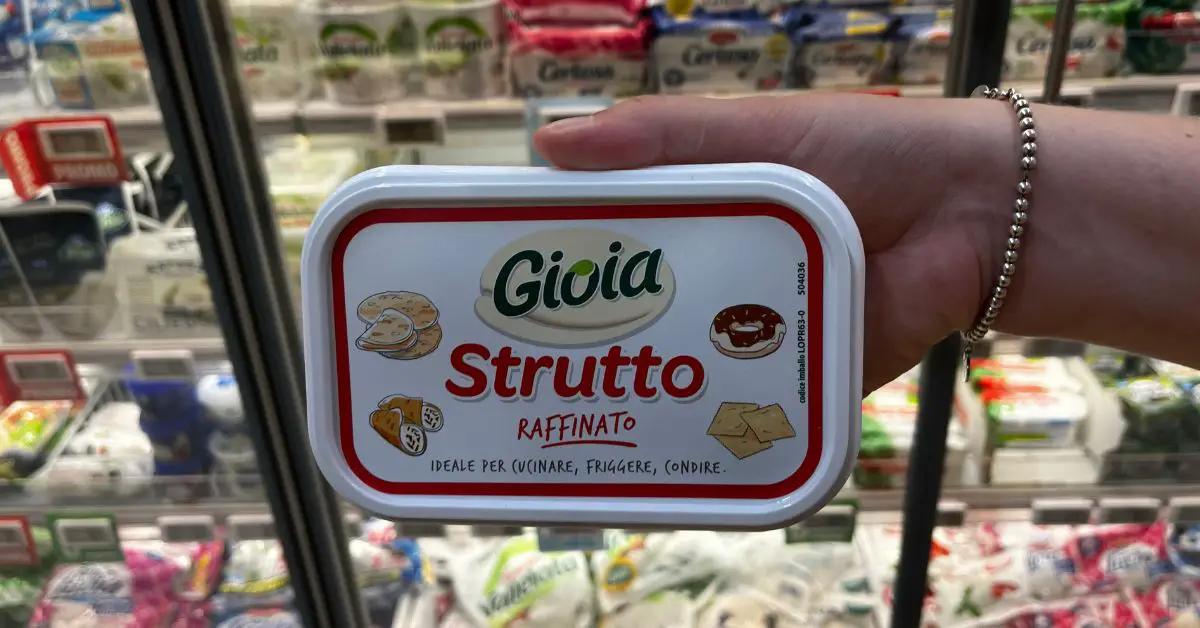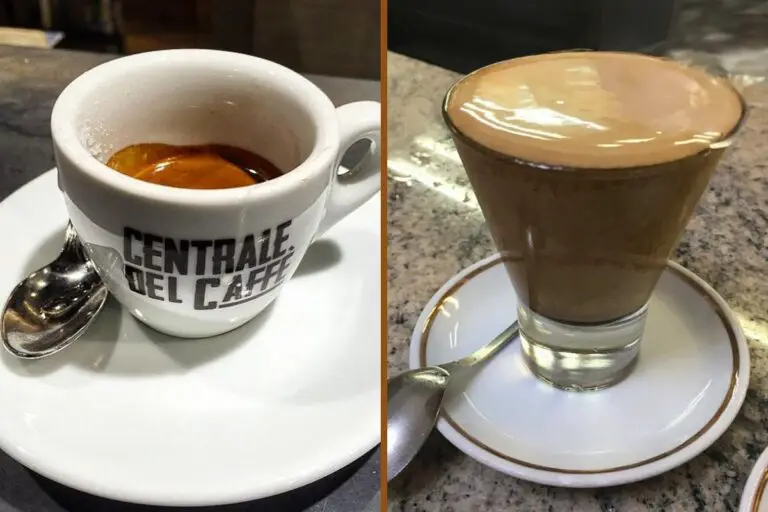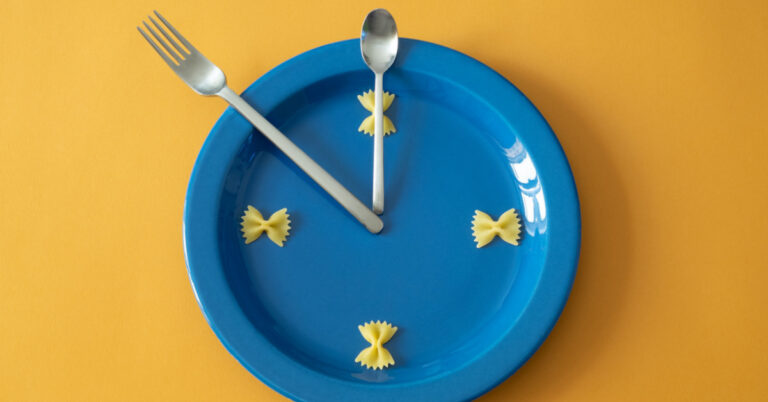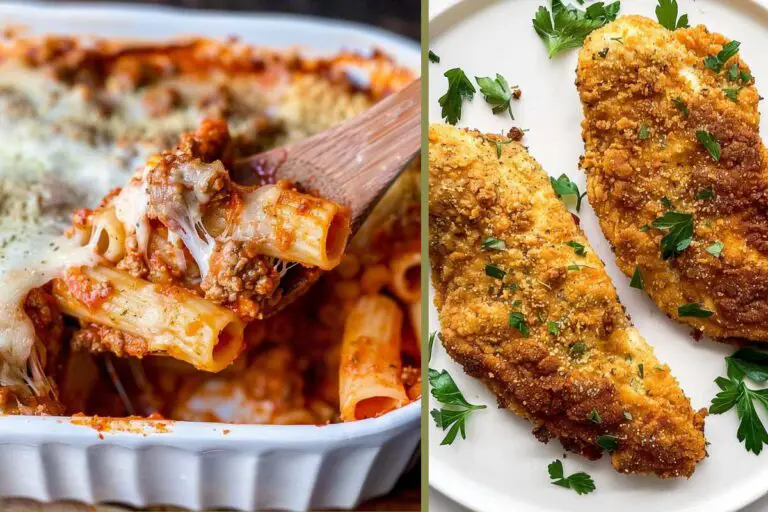Historically, lard was a staple in Italian cuisine, but its use has diminished in modern times. Traditional recipes, especially regional and rustic dishes, often called for lard. However, contemporary Italian cooking has shifted towards healthier alternatives like extra-virgin olive oil.
If you’re passionate about Italian cooking and food, you probably know that, along with extra-virgin olive oil and butter, lard is just another animal fat used in various recipes!
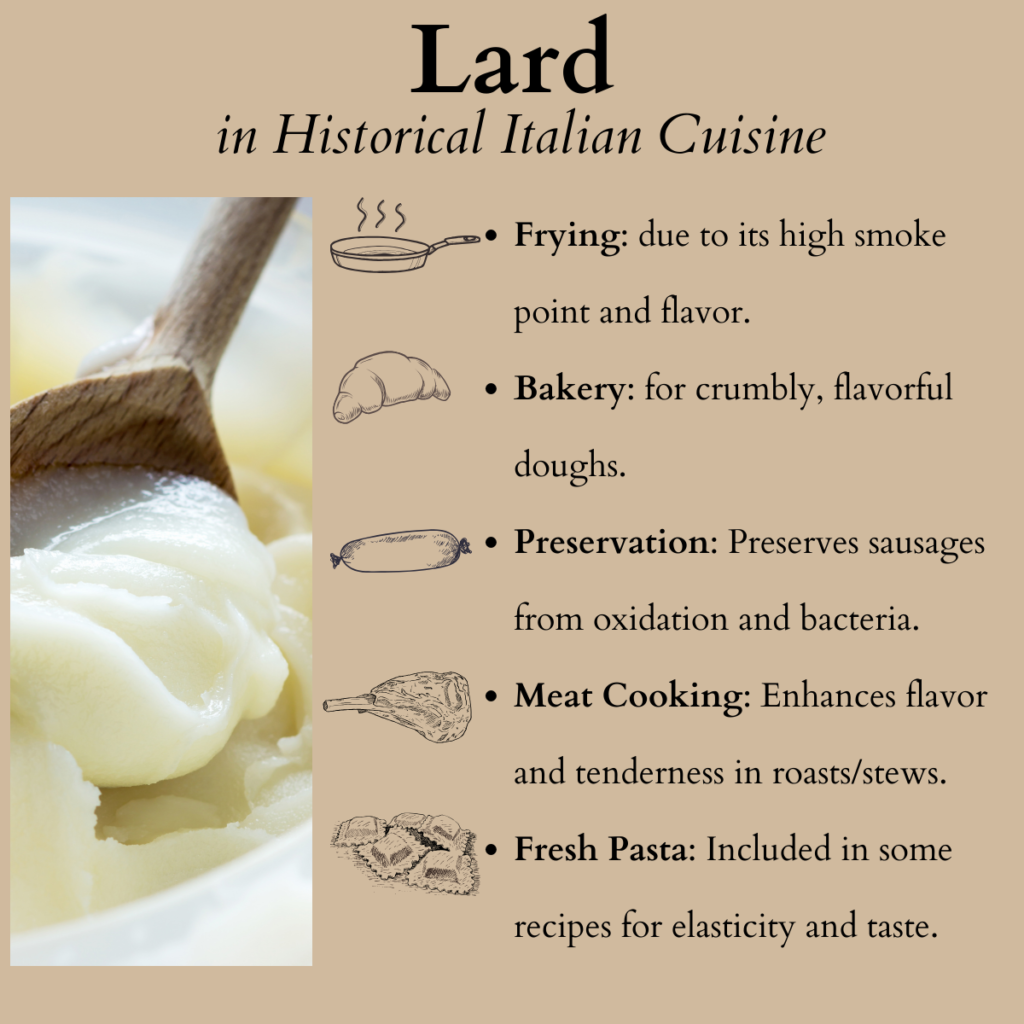
Lard can still be found in certain traditional recipes, including some Italian desserts with lard (as detailed in the linked article), but it’s less common in everyday Italian cooking.
Embracing the Mediterranean diet, Italians now focus on fresh, wholesome ingredients, favoring lighter fats like olive oil. Lard, once prevalent, has taken a backseat in favor of these healthier cooking methods.
For those experimenting with Italian recipes, understanding lard may be a new venture. Less popular now, it has been largely replaced in culinary preparations.
Lard is primarily used in traditional recipes and industrial baked goods. But what exactly is it? Where does it come from, and what does it taste like?
Continue reading this article to uncover all the secrets of this intriguing ingredient.
What is Lard in Italy?
In Italy, “lard” can refer to “strutto” (rendered pork fat) or “sugna” (pork visceral fat), each with distinct characteristics.
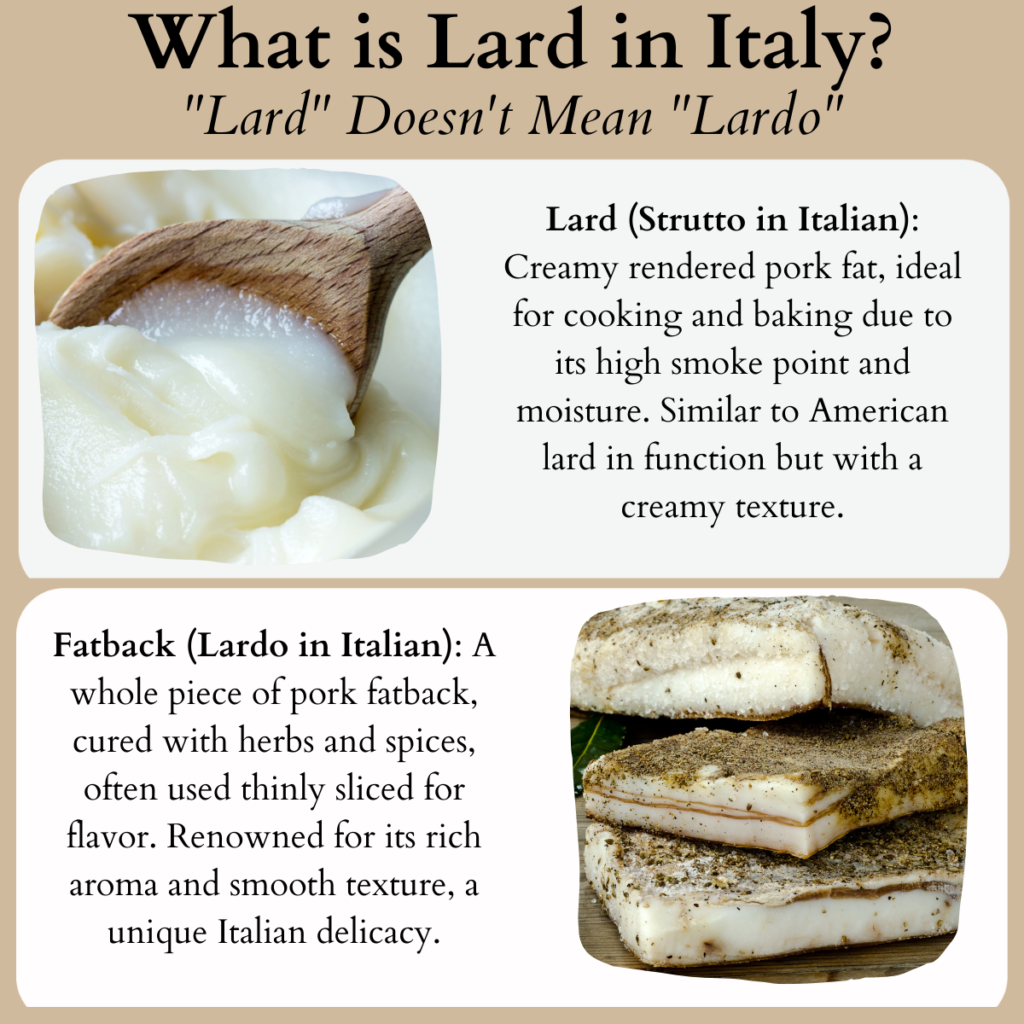
When Italians mention “lardo,” they’re not referring to generic lard, but to a specific cured pork product, similar in use to non-smoked bacon. It’s common in Italian cuisine, featured in recipes like focaccia or bruschetta with lardo.
- Lardo (Fatback): A whole piece of subcutaneous pig fat from the back and abdomen, often salted or smoked. It’s used as a rich, aromatic seasoning in various dishes.
- Strutto (Lard): This creamy rendered fat is derived from the pig’s dorsal area. It’s used mainly in cooking and baking for its high smoke point and ability to add moisture.
- Sugna (Lard): Sourced from the pork’s visceral area, sugna is softer and has a more delicate flavor than strutto.
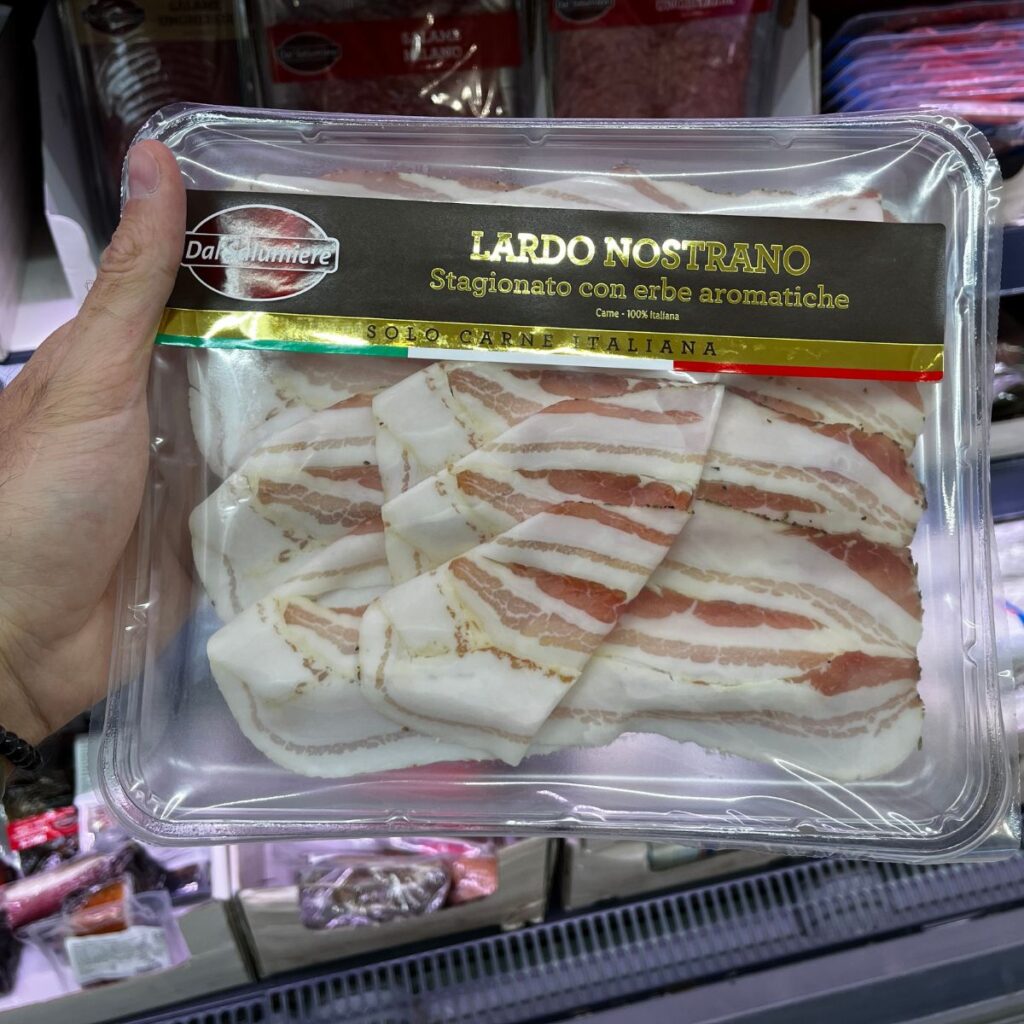
Now that you know what is strutto and the difference with lardo, let’s continue.
How does it look and taste Lard in Italy?
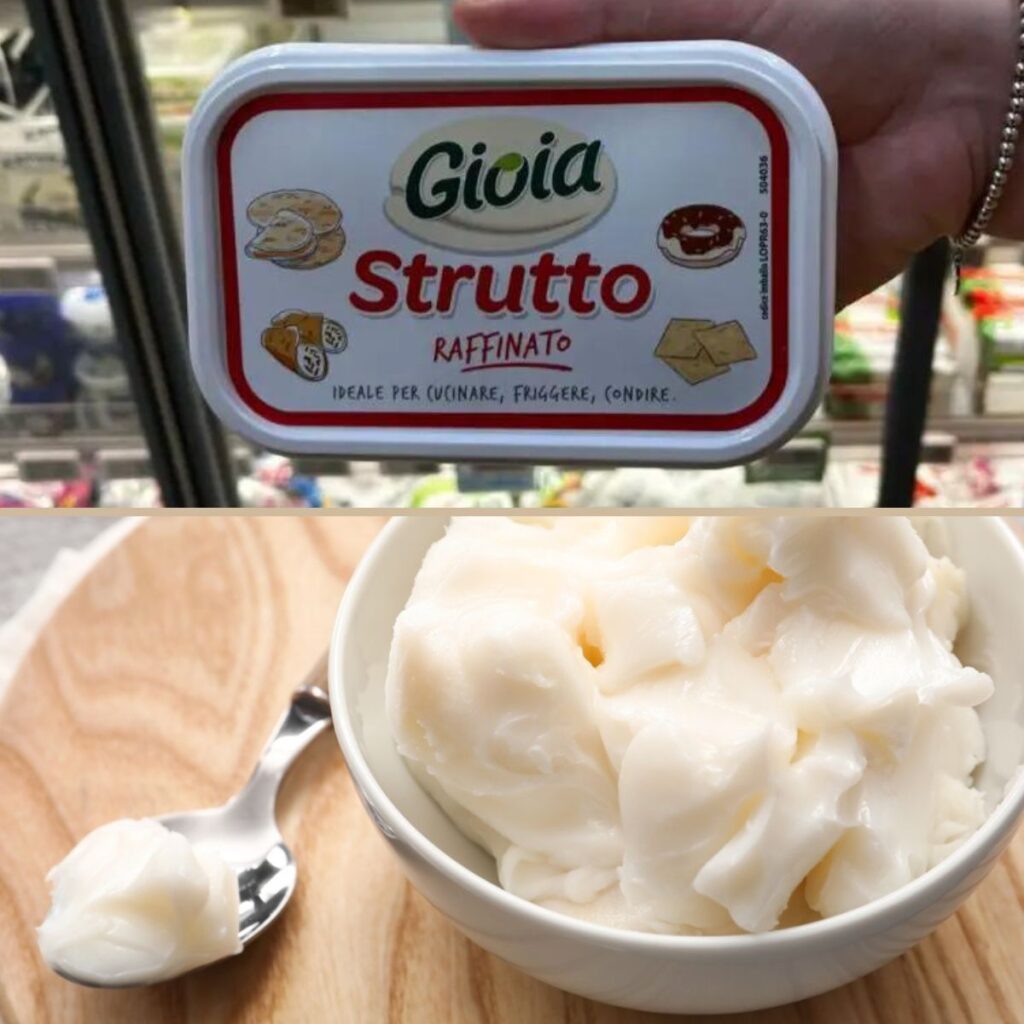
Lard looks very similar to shortening. It’s a compact white paste called “Strutto”, sold in squared packages. It should be kept in the refrigerator and when cold it is odorless, while it has a faint but characteristic odor when melted. Its flavor is also very mild.
Difference between Shortening and Lard: Lard, made from rendered pork fat, adds a rich, savory flavor to dishes, while shortening, typically made from hydrogenated vegetable oils, is flavor-neutral and often used for its ability to create a light, flaky texture in baked goods.
Why do some Italians cook with Lard instead of Olive Oil or Butter?
Although now lard is less common in Italian recipes than in the past, some Italians still use it in some preparations. Why don’t they replace it with oil or butter? Here you can read a number of reasons:
- lard is used in the preparation of traditional dishes (e.g “piadina” or “cannolo sicialiano”);
- lard has a higher smoke point than butter and it is, therefore, better for frying;
- unlike butter, lard has a neutral flavor.
Lard is an animal product so it is always replaced with oil by those who follow a plant-based diet.
Do Italians cook French fries in lard?
No, they don’t. In Italy usually, French fries are fried in vegetable oil. On the other hand, if you are visiting Belgium, their typical fries are fried in lard.
What is Italian lard bread?
In Italy, bread can contain lard, which is sometimes used as an ingredient in bread dough to make it softer. Lard bread is soft, fragrant, and with a crunchy and golden crust on the outside.
Not all bread in Italy contains lard. There are many types of bread made only with water, flour, yeast, and salt. You can easily find bread rolls prepared with olive oil. If you follow a plant-based diet, don’t forget to ask if the bread contains lard.
Do any restaurants in Italy still use lard as an ingredient?
No, they don’t. Nowadays most restaurants in Italy use oil or butter to fry all their food or as a fat ingredient in baked goods. You can still eat food with lard if you order something typical (e.g the “piadina Romagnola” or “tigelle” are typically made with lard).
Where to buy lard in Italy?
You can easily find lard on the refrigerated counter of every supermarket in Italy. Lard is an ingredient of the culinary tradition in Italy and it is still used in the preparation of some recipes. If you live in Italy and you want to prepare a dish that includes lard, we’re sure it will not be difficult for you to find it.

